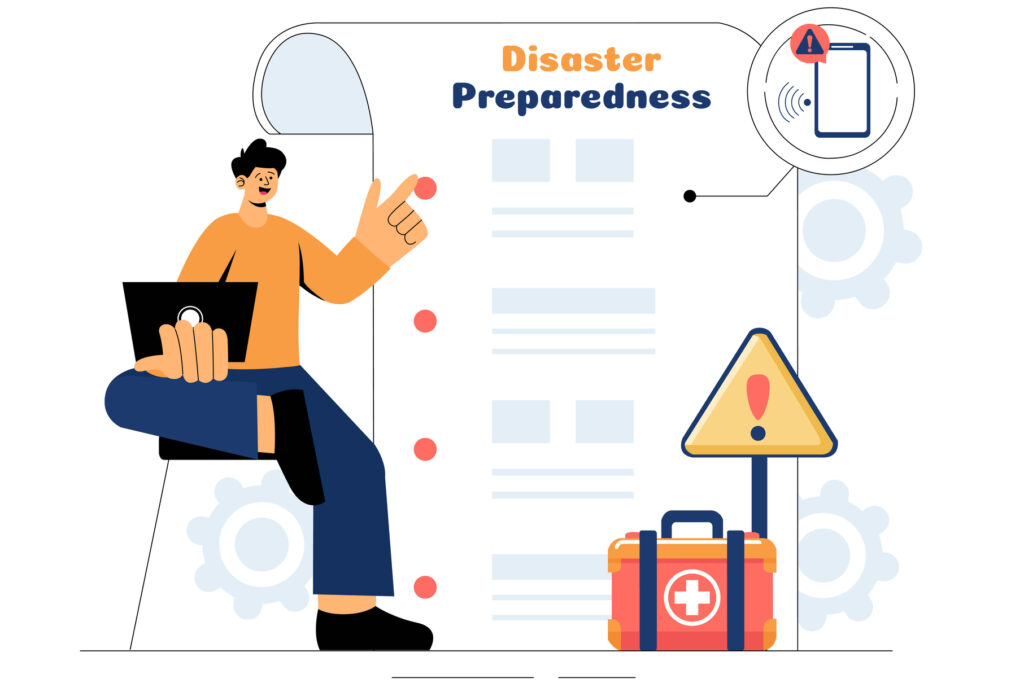 As a Florida resident, I’m acutely aware of hurricane season, which begins in the Atlantic on June 1 and runs through November 30. The Pacific hurricane season for the eastern Pacific basin began May 15 and also runs through November 30. May is National Wildfire Month. While the calendar may specify when certain disasters are expected to occur, in reality a catastrophic event can happen at any time. Think back to January 2025 when wildfires devastated parts of Los Angeles. There’s nothing you can do to prevent a disaster, but you can take steps to be prepared for one. (The following is adapted from previous blogs on the subject of disaster preparedness, with new information added.)
As a Florida resident, I’m acutely aware of hurricane season, which begins in the Atlantic on June 1 and runs through November 30. The Pacific hurricane season for the eastern Pacific basin began May 15 and also runs through November 30. May is National Wildfire Month. While the calendar may specify when certain disasters are expected to occur, in reality a catastrophic event can happen at any time. Think back to January 2025 when wildfires devastated parts of Los Angeles. There’s nothing you can do to prevent a disaster, but you can take steps to be prepared for one. (The following is adapted from previous blogs on the subject of disaster preparedness, with new information added.)
Anticipate disasters
Your location may be a clue to the type of disaster that could befall your business. If you’re in an area that annually experiences hurricanes, you can become more alert at the time for hurricanes in general approaches. During the Atlantic hurricane season, the worst storms typically occur between mid-August and mid-October, with above-normal predictions. Perhaps you’re in an area that experiences tornados, or wildfires, or flash floods and mudslides. Maybe you routinely experience winter storms. Whatever the possibilities, become aware of what could happen…and when.
Make a disaster preparedness plan
As former Prime Minister Benjamin Disraeli said, “prepare for the worst but hope for the best.” So, make a plan that includes steps to take before, during, and after a catastrophic event. You can’t plan for every contingency, but you can plan for some contingencies likely to occur if there’s a disaster.
Be sure to consider:
- Safety of your employees
- Protecting your equipment, inventory, and facilities
- Protecting your data, including tax information
- Continuity of your supply chain
Resource: Start with a disaster recovery plan template to get an idea of the points you want to address. You can then customize the template for your business needs. Some options:
- Disaster Recovery Plan Template
- EMC Insurance has an emergency action plan (click on emergency action plan)
- Ready.gov’s Emergency Response Plan
Use AI. It can help you easily create a disaster recovery plan. According to one source, “enabling ChatGPT to guide the small business owner with directed prompts is an uncomplicated way to develop the plan, saving time and resources and generating a complete document.” You input information—your employees, insurance information, etc.—and then prompt ChatGPT (or whichever AI tool you use) to create a chart listing steps to take.
Check your insurance coverage
Will your current policy provide the protection you think you have? Talk with your insurance agent now. The current coverage may need to be increased or expanded. You may need additional coverage, such as flood insurance or a business disruption/continuation policy.
Resource: Find information about insurance coverage from the Insurance Information Institute.
Know who to contact
Be sure to have your contact list updated to reflect everyone you’d need to talk to in case of a disaster. In addition to family and friends, be sure to have in your contact list:
- Your employees or the employee(s) designated to reach out to your entire staff. Calling or texting is a quick way to reach everyone to provide instructions for their action and to check on their safety.
- Your insurance agent. Also have the insurance company’s contact information in case your agent has suffered the same disaster as you. Keep your policy number with your contact information.
- FEMA. This federal agency provides guidance in obtaining disaster assistance. Contact information: [email protected] (for general questions about assistance) or 800-621-3362.
- SBA. This federal agency provides direct loans following disaster declarations for your area to help cover the cost of repairs or replacement of physical assets damaged in the event and/or funding to cover operating costs after the disaster. Contact information: [email protected] or 800-629-2955.
- Suppliers and vendors. If your suppliers are local, have contact information for backup supplies on hand.
- Trades and repair people. Keep telephone numbers of roofers, electricians, plumbers, etc. who might be needed following a disaster.
- Other help. Likely you already have certain pros who help you with your business activities (accountant, IT specialist). Just check to ensure you have up-to-date contact information.
Final thought
Because preparedness should be a year-round endeavor, the ideas for readying your business for a potential catastrophic event aren’t new. Nonetheless, it’s worth reviewing because so many small business owners simply don’t prepare.
Find more information concerning disaster preparedness in this list of blogs here.


